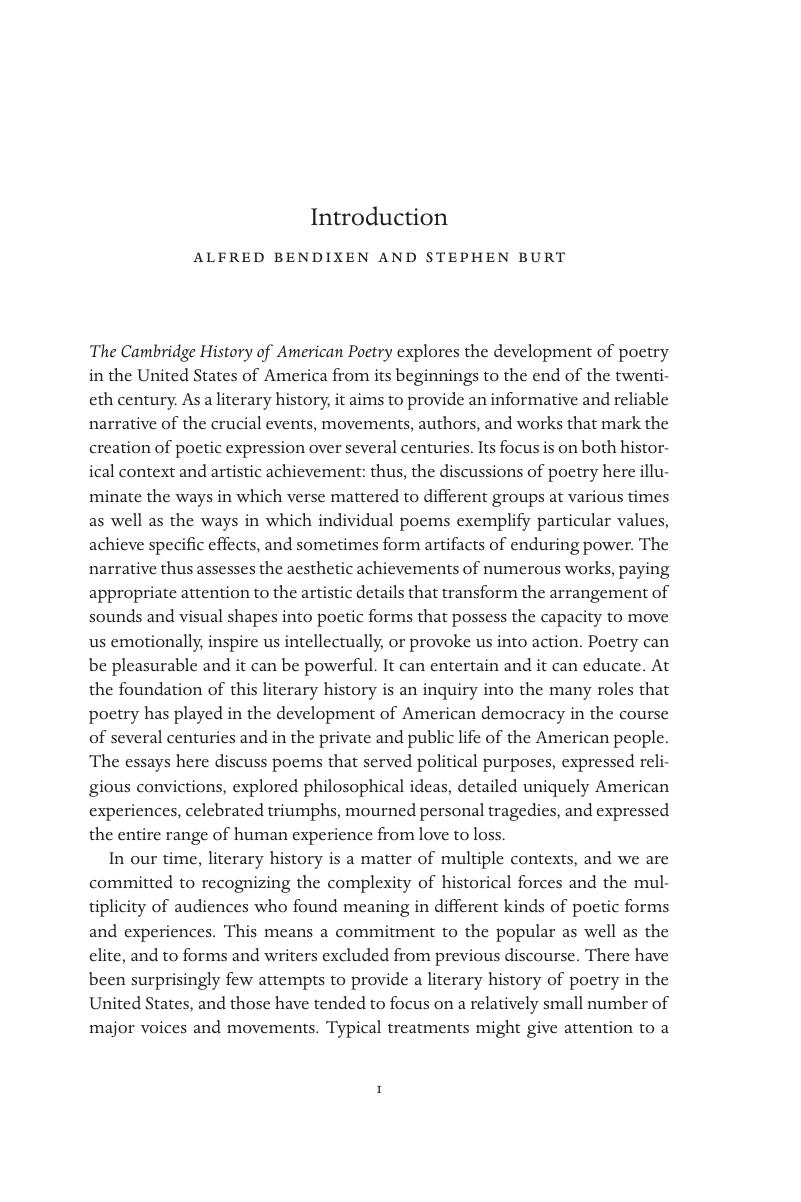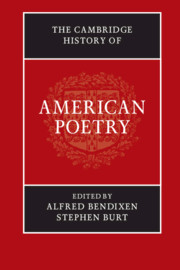Book contents
- The Cambridge History of American Poetry
- The Cambridge History of American Poetry
- Copyright page
- Contents
- Notes on Contributors
- Acknowledgments
- Introduction
- Part I Beginnings: Poetry before 1800
- Part II A New Nation: Poetry from 1800 to 1900
- Part III Forms of Modernism, 1900–1950
- Part IV Beyond Modernism: American Poetry, 1950–2000
- Selected Bibliographies
- Index
Introduction
Published online by Cambridge University Press: 05 December 2014
- The Cambridge History of American Poetry
- The Cambridge History of American Poetry
- Copyright page
- Contents
- Notes on Contributors
- Acknowledgments
- Introduction
- Part I Beginnings: Poetry before 1800
- Part II A New Nation: Poetry from 1800 to 1900
- Part III Forms of Modernism, 1900–1950
- Part IV Beyond Modernism: American Poetry, 1950–2000
- Selected Bibliographies
- Index
Summary

- Type
- Chapter
- Information
- The Cambridge History of American Poetry , pp. 1 - 12Publisher: Cambridge University PressPrint publication year: 2014
- 1
- Cited by



